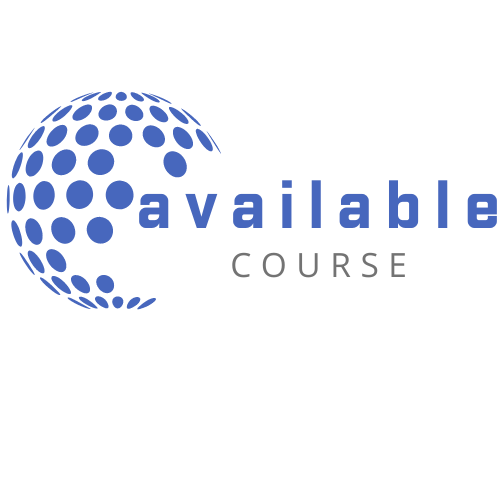
Animal-Assisted Interventions. An Incredible Range of Therapeutic Benefits

Get Animal-Assisted Interventions. An Incredible Range of Therapeutic Benefits on Avaicourse.com
This course is available immediately. Please contact us at [email protected] with the best service for more detailed advice.
Description:
A”toolbox” of interventions for customers to diagnose as:
Trauma,anxiety,depression and post-traumatic stress disorder
Mania and mental disorders
Behavioral and antisocial personality disorders
Cognitive impairment,dementia and stroke
Behavioral and personality disorders
Intellectual and learning disabilities
Physical and occupational disabilities
Join animal adjuvant therapy expert Brooke Wimer,MOT,OTR / L and learn how incorporating animals into your professional activities can greatly improve customer outcomes in a surprisingly wide range of areas, including:
Reduces stress and anxiety levels, lowers blood pressure
Relieves loneliness and poor self-esteem in those traumas and anxiety
Treatment of symptoms of depression and PTSD in people
Develop empathy for those with conduct disorders and antisocial personality disorders
Improve body function in stroke patients
Improve reading and understanding skills of children with learning disabilities
And more!
You will receive specific examples of animal adjuvant therapy goals in various functional areas. You will develop a toolbox of Animal-Assisted Interventions and animal-focused treatments that you can use the next day. The workshop also includes the latest research and solid basics on the emotional bond between humans and animals. You will also find very useful information and resources to help you develop programming and implement your own animal-assisted interventions.
Outline
Overview
Human and animal emotional bonds
Treating animals vs. serving animals
Animal assisted therapy, activities and education
Handler with clinician, clinician-animal team
Animal-based interventions without animals
Mindfulness in animals and how it helps the human brain
Neuroscience of human-animal relations
Why zebras don’t get ulcers
Benefits of having a companion animal
Interventions and treatment objectives/outcomes
Psychological,cognitive,emotional and behavioral problems
Increase attendance and participation at meetings
Treatment of symptoms associated with trauma, anxiety and depression
Reduce loneliness and increase self-esteem
Develop compassion and encourage extroverted attention
Provide hope,meaning and purpose
Learning challenges
Improve reading and comprehension skills
Support vocabulary development
Increase verbal interaction
Physical and professional issues
Progress fine and coarse motor skills
Improve sitting / standing balance
Increased endurance and activity tolerance
Promotes improved sensory processing
Components of Animal-Assisted Intervention
Choosing the right recipient for care
How to deal with customers
Customer and Animal Interaction technology
Close, file
Start your own Animal Assistance Program
Animal qualifications and characteristics
Clinician qualification
Preparing and caring for animals
When animals show signs of stress and agitation
Protect your business with risk management
Organizations and resources to launch animal assistance programs
Objectives
Identify evidence-based research on Animal-Assisted Interventions.
Implement Animal-Assisted Interventions for people with mental disorders, including anxiety, depression, bipolar, schizophrenia, and personality disorders.
Design animal-assisted interventions to improve language and literacy rates in children with learning disabilities.
Design animal-assisted interventions to address physical and occupational challenges.
Animal-assisted intervention is used as a way to treat patients with dementia and other cognitive disorders.
Apply knowledge to design your own animal-assisted programming.
Explain the difference between treating animals, serving animals, and emotionally supporting animals.
Health and Medical course
More information about Medical:
Medicine is the science and practice of establishing the diagnosis, prognosis, treatment, and prevention of disease.
Medicine encompasses a variety of health care practices evolved to maintain and restore health by the prevention and treatment of illness.
Contemporary medicine applies biomedical sciences, biomedical research, genetics, and medical technology to diagnose, treat, and prevent injury and disease,
typically through pharmaceuticals or surgery, but also through therapies as diverse as psychotherapy, external splints and traction, medical devices, biologics, and ionizing radiation, amongst others.
Medicine has been around for thousands of years, during most of which it was an art (an area of skill and knowledge) frequently having connections to the religious and
philosophical beliefs of local culture. For example, a medicine man would apply herbs and say prayers for healing, or an ancient philosopher and physician would apply bloodletting according to the theories of humorism.
In recent centuries, since the advent of modern science, most medicine has become a combination of art and science (both basic and applied, under the umbrella of medical science).
While stitching technique for sutures is an art learned through practice, the knowledge of what happens at the cellular and molecular level in the tissues being stitched arises through science.
More Courses: FITNESS – HEALTH – MEDICAL
Outstading Courses: http://avaicourse.com/courses/animal-assisted-interventions-an-incredible-range-of-therapeutic-benefits/
Course Features
- Lectures 0
- Quizzes 0
- Duration 50 hours
- Skill level All levels
- Language English
- Students 142
- Assessments Yes


1 Comment
They sell all available products.We encourage you to check Content Proof carefully before paying.“Excepted” these contents: “Online coaching, Software, Facebook group, Skype and Email support from Author.”If you have enough money and feel good.We encourage you to buy this product from the original Author to get full other“Excepted” contents from them.Thank you!